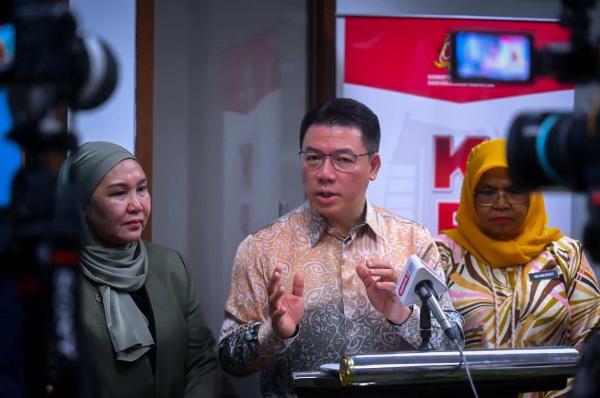SEPANG, July 17 — The Housing and Local Government Ministry (KPKT), through the National Landscape Department (JLN), has allocated RM3 million for a sustainable landscape project at and around the Kuala Lumpur International Airport (KLIA), in preparation for Visit Malaysia 2026.
Minister Nga Kor Ming said the project, set to be completed in December, aims to enhance visual appeal and comfort for tourists and foreign diplomats and give them a good first impression of the country.
“It also plays an important role in strengthening KLIA’s image and identity as the nation’s main gateway, reflecting Malaysia’s uniqueness and harmony,” he said.
“The commitment to landscape development by the KPKT, through the JLN, reflects the government’s strategic initiatives and continuous efforts to beautify public spaces, while creating a more sustainable, livable, and conducive environment for the well-being of the community,” Nga said at a press conference on the project at KLIA today.
Also present were Nga’s deputy Datuk Aiman Athirah Sabu, JLN director-general Mansor Mohamad, and Malaysia Airports Holdings Bhd (MAHB) managing director Datuk Mohd Izani Ghani.
Nga said the proposed project site covers the departure and arrival halls at KLIA Terminals 1 and 2, as well as sections of the main road exiting the airport, which serves as a primary access point for KLIA users, especially domestic and international tourists.
He added that the design will be developed in-house by JLN’s landscape architects, in collaboration with MAHB, based on the concept “Harmony in Diversity” to reflect Malaysia’s rich cultural heritage. The design will incorporate elements of architecture, landscape, printmaking, artefacts, language, race, and traditions.
He said the landscape project would involve the proposal for a vertical landscape design in the departure and arrival halls, and putting various plants along the main route to enhance the visual appeal of the KLIA environment.
“To showcase Malaysia’s cultural diversity, we will also include entrance statements in multiple languages, including Malay, English, Chinese, and Tamil,” he said.
— Bernama




